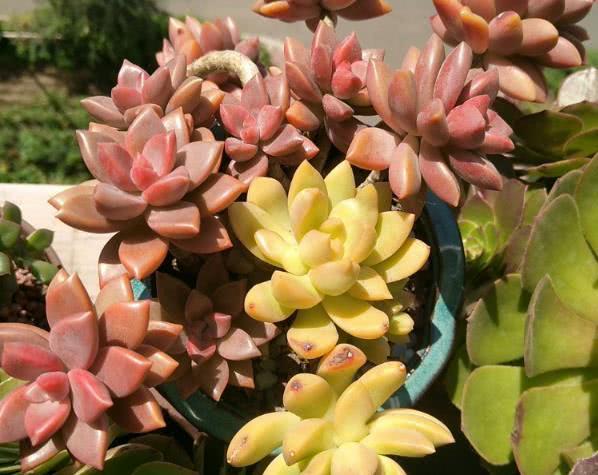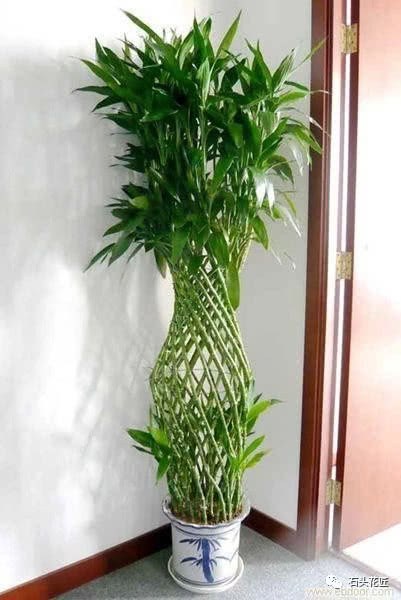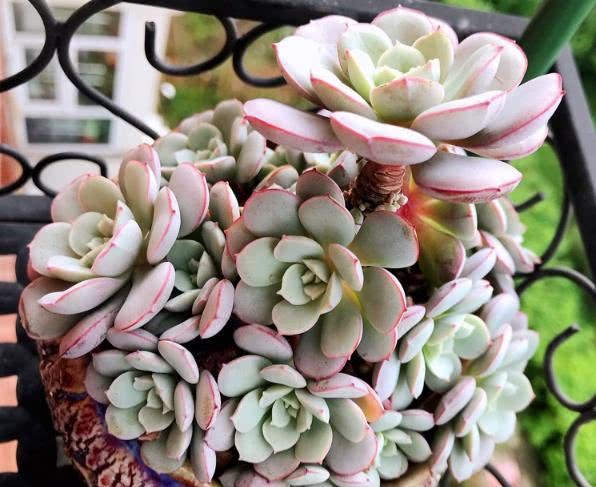What's the problem when succulent plants move out to bask in the sun and soften their leaves?

If it is a mild sun in the morning or evening, and the meat has not been watered in recent days, it should be a normal phenomenon, indicating that succulent plants are short of water. After the soil temperature in the basin drops, you can pour some water on the succulent plant. However, it should be noted that it is best not to take it out to the sun after watering the meat. Because at this time, there is more water in the basin, and then exposure, and if the flowerpot is not ventilated, it is tantamount to putting the meat in the steamer and it is easy to rot the roots.
So in another case, if the flowerpot is wet and the succulent plant is exposed at noon, the succulent plant becomes soft, which means that there may be something wrong with the root. In addition, let's see if the leaves of the meat become transparent. Transparency means that the leaves have melted water. Some succulent, even if it is the same kind of succulent which can bask in the sun, different individuals have different needs for sunlight, and they do not need too strong sunlight, such as Yulu.
Why do succulent leaves turn red after basking in the sun? Often give succulent plants the sun, put them in a ventilated and ventilated place in the open air, and fully accept the sunlight, and its leaves will change in color like the leaves of trees in the woods in autumn. Of course, basking in the sun is not when it is hot in summer, which will burn or even kill the succulent plants. After being released outside for a period of time, the tip color of the leaves of Guanyinlian began to change.
During this period of time, succulent leaves do not need a lot of light, especially to avoid the bright light at noon, otherwise they will run out of nutrients for breeding new buds and generally put them in shade or astigmatism. Keep the soil slightly moist, which has a root-promoting effect, and another is ventilation. We must ensure a ventilated environment. Generally, many roots and a succulent prototype can be seen after two or three weeks. At this time, we can properly bask in some sun. Another is that the nutrients of the master film will be consumed slowly, which is normal.
Succulent plants grow in areas ranging from the edge of the desert to the mountains, so some species, such as Saussurea involucrata, can withstand extremely hot weather better than most stone lotus, while others native to mountain areas can withstand a low temperature of 4 ℃, which varies greatly. In general, stone lotus is suitable to grow between 15 ℃ and 30 ℃. Stone lotus is a summer-type succulent plant, that is, the warm season is their peak growing season. There will be a short dormancy period below 12 ℃ in winter, during which growth will be suspended, and when it is below 10 ℃, it is best to move to a bright place indoors to keep warm. At all times, the stone lotus should be planted in a place with cool and ventilated air.
Drought-tolerant succulent plants like to be dry and tend to rot their roots in wet conditions. Due to the high humidity in Southeast Asia, planting succulent plants must be careful, usually only need to pour a small amount of water on the soil around the roots of the plant, in order to keep the basin soil moist. In case of rainy days, succulent plants should be moved to a ventilated place under the eaves to take shelter from the rain, and watering should be suspended for several days until the soil begins to dry, and watering should also be reduced during winter and summer dormancy.
Here is a gathering place for succulent plant lovers, sharing succulent maintenance skills, welcome to follow and exchange.
- Prev

Connoisseurs grow flowers and look at their families. Three kinds of flowers are suitable for three places. Did you choose the right one?
I wonder if you have noticed that now more and more people like to raise some flowers and plants in their living environment, whether in the office or at home, as long as a few pots of green potted plants are placed, it will give people a kind of clarity.
- Next

During the growing period of succulent plants, proper fertilization can make succulent plants more prosperous.
During the growing period, it is the best time to fertilize succulent plants. If you do a good job in fertilizing, succulent plants can grow more prosperous during the growing period. In fact, it is also very suitable to make rotten leaf soil for succulent plants because of the high temperature in summer and faster fermentation.
Related
- Wuhan Hospital Iron Tree Blooming Result Was Instantly Frightened by the Gardener Master
- Which variety of camellia is the most fragrant and best? Which one do you like best?
- What is the small blue coat, the breeding methods and matters needing attention of the succulent plant
- Dormancy time and maintenance management of succulent plants during dormancy
- Minas succulent how to raise, Minas succulent plant pictures
- What are the varieties of winter succulent plants
- How to raise succulent plants in twelve rolls? let's take a look at some experience of breeding twelve rolls.
- Attention should be paid to water control for succulent plants during dormant period (winter and summer)
- Watering experience of twelve rolls of succulent plants
- Techniques for fertilizing succulent plants. An article will let you know how to fertilize succulent plants.

